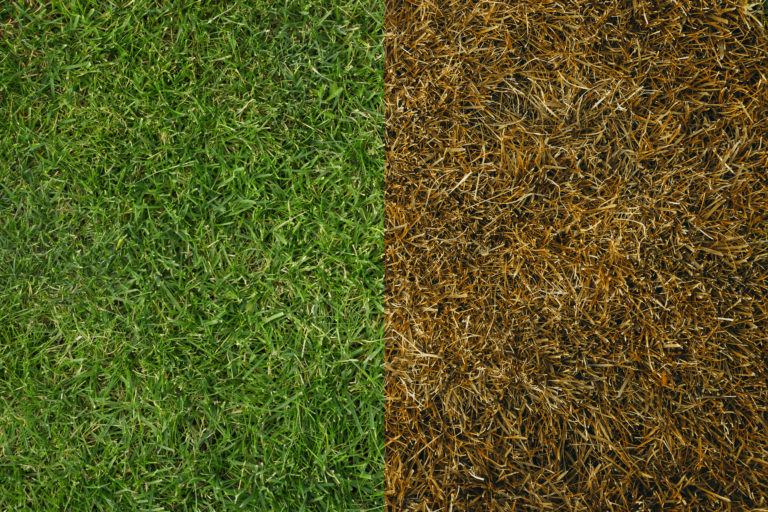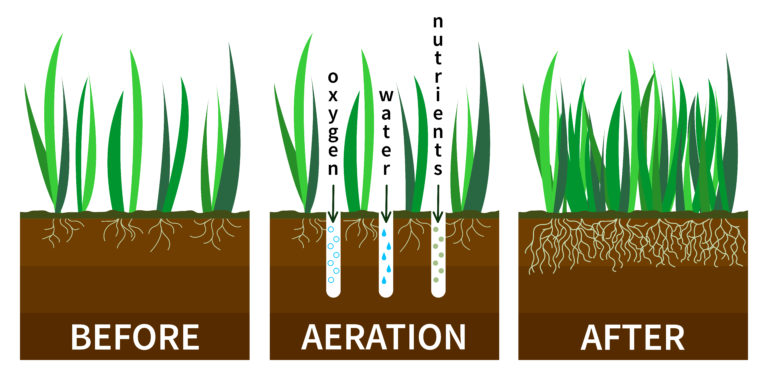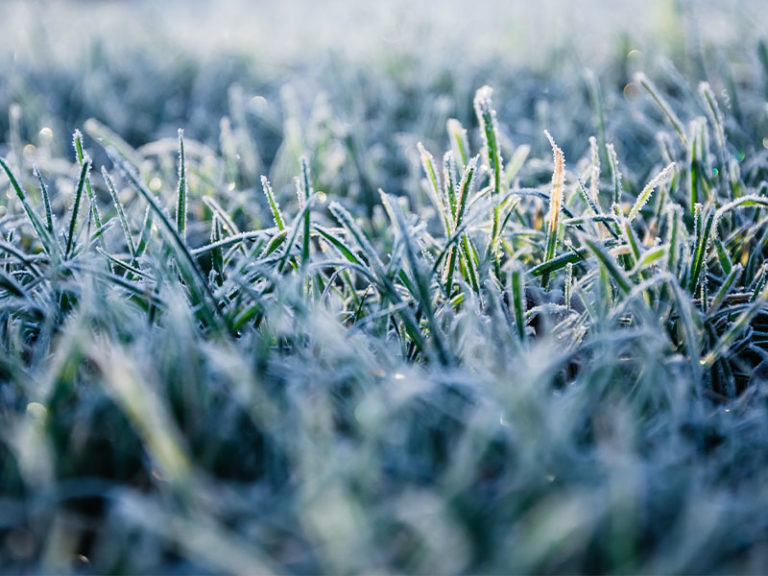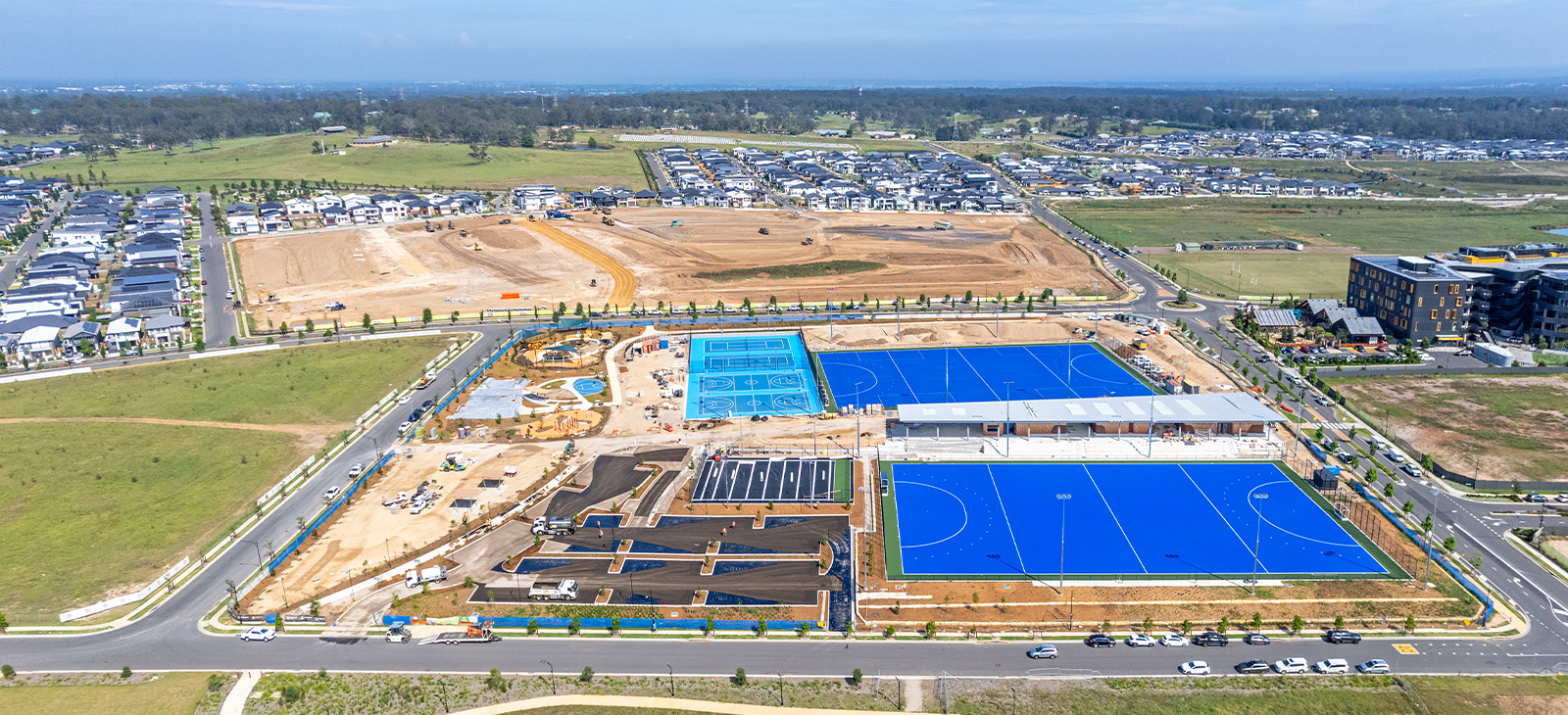Have you ever wondered how to maintain lawn while dealing with the ups and downs of Australian weather? A browning and patchy lawn is an image synonymous with the Australian summer. An effective maintenance regime is critical to controlling how much damage is done. During years of drought when severe water restrictions come into play, preventative maintenance is even more important.
So what can you do to set your lawn up for success, preventing as much damage as possible? And likewise, what about in winter when your lawn is suffering from heavy frosts? What can you do to protect the turf on your commercial property? Here we will run through some of the steps you can take to protect the health of your turf as much as possible.
Let’s start with how heat affects turf.
What happens to turfgrass in the hot summer season?
Scorching and prolonged sunny days, paired with less rainfall, can severely stress your lawn, whether on your commercial property, school grounds or a sports field.
“Turfgrasses constitute a vital part of the landscape ecological systems for sports fields, golf courses, home lawns and parks. However, turfgrass species are affected by numerous abiotic stresses include salinity, heat, cold, drought, waterlogging and heavy metals and biotic stresses such as diseases and pests. Harsh environmental conditions may result in growth inhibition, damage in cell structure and metabolic dysfunction. Hence, to survive the capricious environment, turfgrass species have evolved various adaptive strategies.” (Fan et al, 2020).
These are some of the signs your lawn or turf is suffering from heat stress:
- Browning, yellowing, and wilting
- A hay-like appearance
- Crunchy feel
- Patchy spots
- Evidence of weeds, pests and diseases
This continued heat stress and dehydration will eventually lead to a shallow root system, with long-term impacts on your lawn.
Key tips to maintain turfgrass in summer
Aerate! It’s essential.
Aerating is when small holes are inserted into your lawn or sports field, relieving compaction. This enables oxygen, water and nutrients to better penetrate the soil, which encourages growth. According to Love The Garden, “by aerating your lawn, you will break through the thatch layer, which is the layer of intermingled dead and living stems, roots and leaves that builds between the grass and the soil underneath.” This needs to be done before the harsh heat of peak summer however. Plan ahead, as the best time to aerate your lawn is spring.
Deep and infrequent watering is key.
Go for long, deep watering to maximise moisture penetration. Follow up with a wetting agent to retain moisture in the soil or sand profile during dry spells. Avoid watering during the heat of the day, early morning is best. Watering when it’s too hot will be wasted, as the water evaporates before the soil has a change to absorb it.
Mow at the correct times.
Mowing when it’s too hot will not benefit your lawn. As Joondalup Turf Farm states, “hold off on the mower when temperatures soar above 32°C. The scalped look isn’t just aesthetically unpleasant; it exposes the delicate grass blades to the harsh sun, increasing stress and water loss.” Mow approximately every 10-14 days, and sharp mower blades are essential! Only trim up to 1/3 of the turf length at a time to avoid unnecessary stress for the plant. If you’re not sure about your turfgrass species and the best time to mow, speak to our team.

How to maintain lawn and keep grass green
As mentioned above, the intense heat of summer can cause browning of your turf. Here are some tips on how to maintain lawn and keep your lawn green.
- Remember to plan ahead and aerate in spring. This will set your lawn up for success when the heat arrives, allowing it to absorb important nutrients more efficiently. You can see an example of how it works in the images mentioned below.
- Mowing at a higher height (think the ⅓ rule mentioned earlier) will keep your turf cooler, protect the soil and roots and allow for greater absorption of moisture.
- Fertilising is best completed in spring and autumn, but if you missed your chance be sure to use only a slow-release fertiliser suitable for hot weather. Over-fertilising with conventional options will have the opposite effect and cause more stress to your lawn.
- Use a turf pigment. Best applied from April to August, turf pigments are colour enhancement products that can be applied to your field enabling you to keep colour in your surface year-round. You can read more about how they work here.
- Keep on top of weeds – they will compete with your turf for water and nutrients if not removed.

What happens to turf grass in the cold winter weather
Much like summer, the extreme cold of winter can be challenging for your turf. Firstly, your lawn will go dormant and fade in colour. According to Turfco, this is a natural protection measure. “Dormancy is a protection measure lawn grasses use to withstand freezing temperatures and frost with the grass leaves thinning and drying out and the plant’s energy being stored in the lower parts of the grass stem and root areas.”
Frost damage is also a common problem that occurs when the grass is colder than the surrounding air. The damage causes the turf blades to lose colour. Thankfully, this shouldn’t kill your turf and you will be back to a normal how to maintain your turf regime once spring hits.
Key tips to maintain grass in winter
- Solve your frost problem before it occurs. Use irrigation to remove the frost and try not to walk on your lawn while it has frost on it. If you have warning that a frost is coming, avoid mowing and irrigate your lawn evening before. This water will reduce the chance of the grass blades freezing.
- Remove any weeds
- Reduce your irrigation or watering regime. You should only need to water if your lawn is looking particularly dry.
- Mowing can be spread out a little further, think every 2 – 3 weeks.
- Winter also often means heavy rain and high traffic, which can wreak havoc on fields. Make sure you’re sports field drainage is up to scratch!

Maintaining the gardens and lawns on your commercial property
Maintaining well-kept gardens and lawns on your commercial property is crucial for creating a positive first impression and enhancing the overall aesthetic appeal. Regular mowing, weeding, and edging are essential for a neat appearance. Engaging professional landscaping services can ensure that your commercial property’s outdoor spaces are always well-maintained, enhancing the overall curb appeal and creating a welcoming environment for clients and employees. That way, you don’t have the hassle of knowing how to maintain lawn when you other other items to think about!
Maintaining healthy turf on sports fields
If your sports turf isn’t performing or you need some general advice on your sports surfaces, our team can provide you with a sports turf consultation. Our sports turf consultants deliver a specialist service designed to provide you with the critical information you need to ensure your sports turf surface is performing at its optimum. Whether you work in a school, you manage a sporting stadium or you’re looking to expand your current local sports field, we can assess where you’re at, and what you need to do to get your surface in tip-top shape.
Maintaining green grass on golf courses
Maintaining lush green grass on a golf course requires a multifaceted approach. Frequent mowing is crucial, adjusting the height based on the specific area (greens, fairways, rough) and the time of year.
Proper irrigation is essential, ensuring adequate water supply while minimising water waste. Regular fertilisation provides the necessary nutrients for healthy growth, while careful pest and disease control prevents damage to the turf. Aeration helps improve soil health by reducing compaction and allowing for better air and water penetration. Finally, topdressing replenishes essential nutrients and improves the playing surface’s smoothness and consistency.
If you’d like to know more about how to maintain lawn and how we can assist you with your golf course, please get in touch with one of our golf management professionals.
Ask a professional how to maintain lawn on your commercial property
Regaining a lush, green lawn can feel like a daunting task. However, with the expertise of Landscape Solutions, this goal is achievable. Our team of experienced professionals can assess your lawn’s specific needs, whether it’s combating weeds, improving drainage, or restoring damaged areas. We utilise proven techniques like soil aeration, topdressing, and fertilisation to revitalise your lawn’s health and prepare it for adverse weather. By entrusting your lawn care to Landscape Solutions, you can enjoy the beauty of a thriving commercial green space without the hassle.
If all of the above sounds daunting and you’re not quite sure where to start with how to maintain lawns on your commercial property, get in touch with one of our sports turf management experts.



